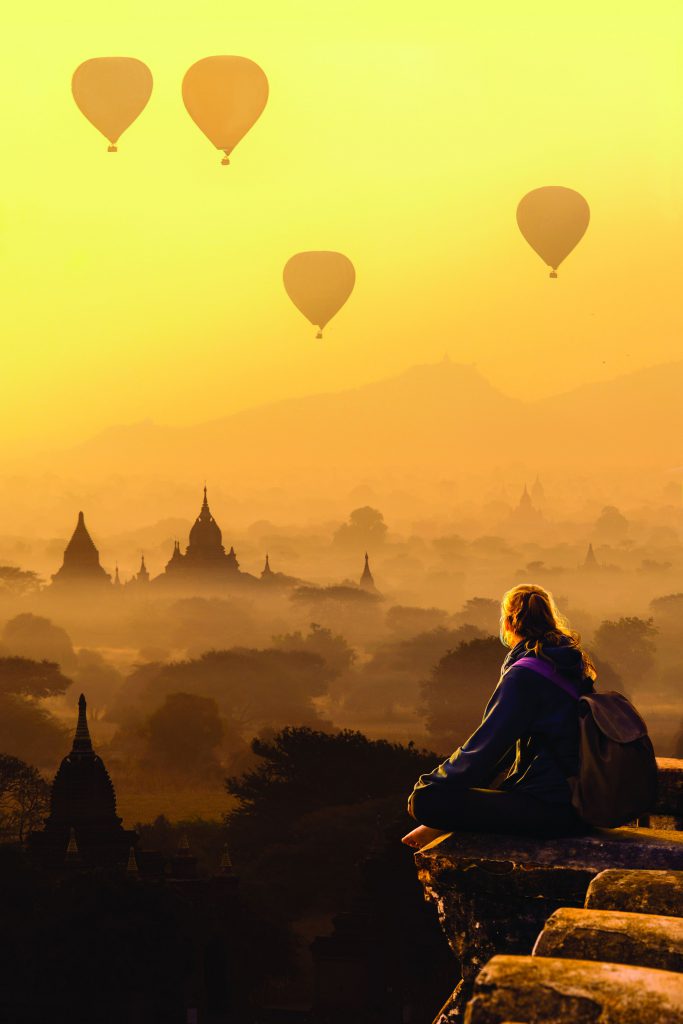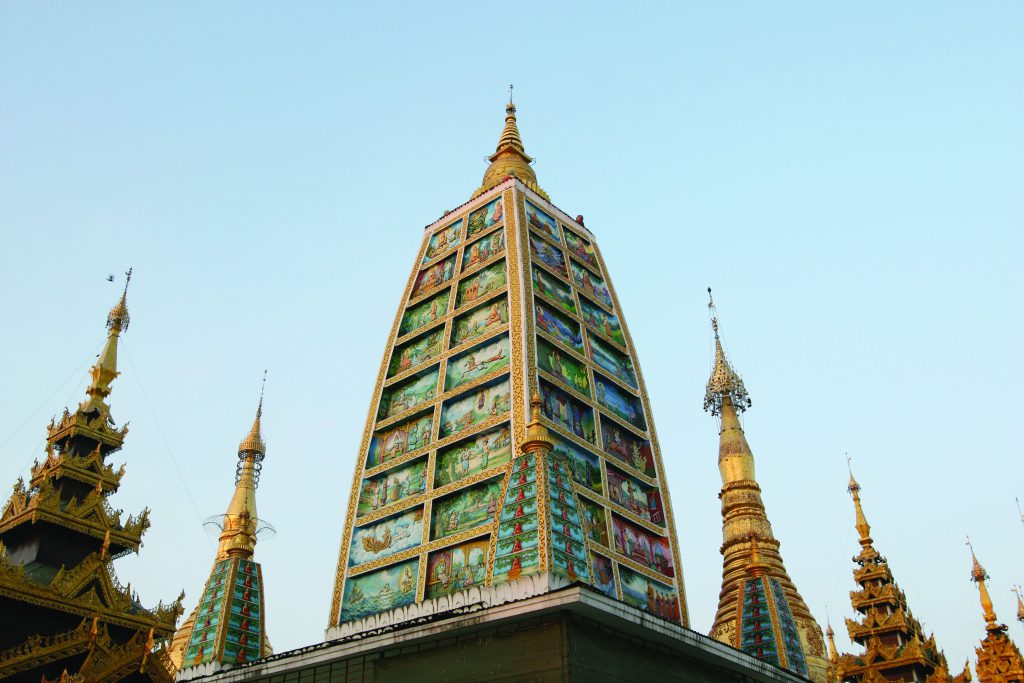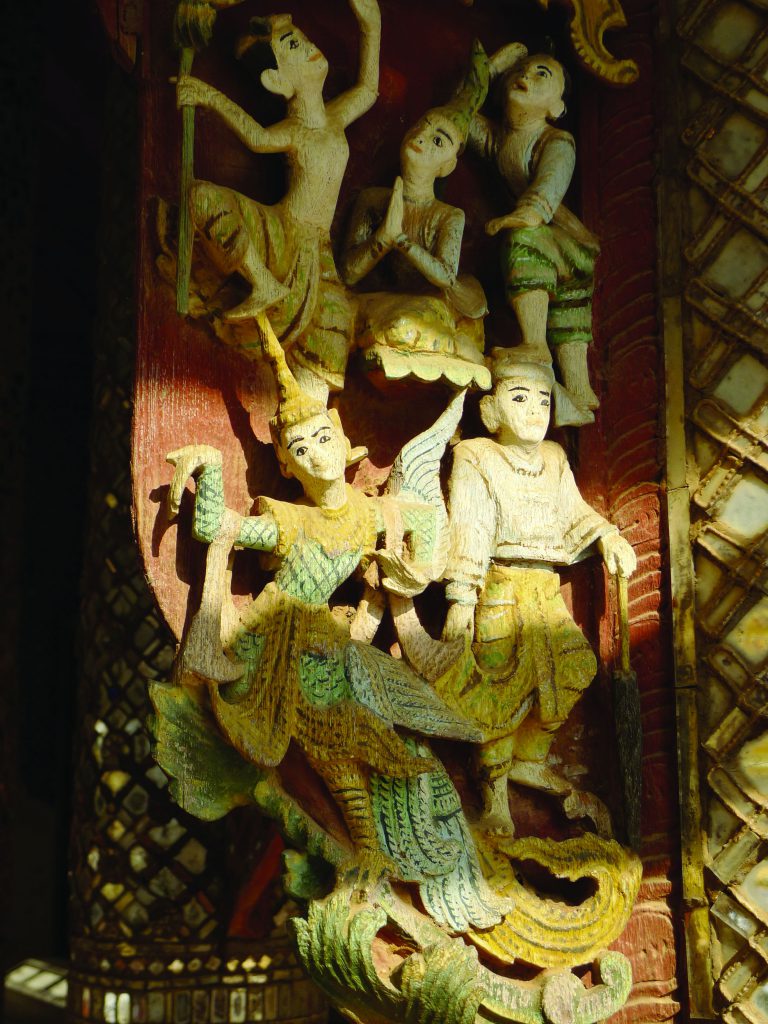Lam Le
Ancient temples and modern development make Myanmar a uniquely fascinating destination.

Yangon
HEART OF AN EMERGING COUNTRY
Yangon is the heart of a developing Myanmar. The city is a massive construction site of numerous new buildings, yet the old infrastructure and traditional sights of the ancient capital remain.
The symbol of Yangon is undoubtedly ShwedagonPaya, the enormous 2,500-year-old golden Buddhistpagoda. Spanning many dynasties, the pagoda stillstands tall, a testimony to the glory days of Myanmar.The main tower of Shwedagon is 98 meters high,covered by more than 30 tons of gold, and can beseen from many locations throughout the city. Mycompanion and I arrived at Shwedagon on a rainyafternoon as the city started to light up. You can take awalk around the pagoda, which takes around an hour, orpick a corner to light candles or offer silent prayers as asense of peace and eternity fills the air.

At the same time, the bustling city life of Yangon is fascinating to explore. One morning, we wandered near our hotel and got lost in a vast area of newly constructed villas, surrounded by green and peaceful trees. Elsewhere, the city retains its unique character, with men wearing longyi and chewing betel and women riding bicycles to the market.
Yangon also has an international area which was dynamic and crowded when the sun set. Food vendors on streets and narrow alleys served a wide range of treats from seafood to local specialties like insects. We visited this area, which stretches from 18th to 22nd Streets of Shwe Mingalar, drinking Myanmar beer, eating grilled seafood and watching streams of people passing by.

Bagan
UNFORGETTABLE MOMENTS
Bagan is a living heritage city filled with thousands ofancient temples and pagodas dating back a millennium.Even as tourism continues to grow, a local way of life anda sacred air remains.
We booked a hotel in New Bagan, the more developed area of the city, which was a retro-style property with a swimming pool and dining area set in a tropical garden. From our hotel, we could rent electric bicycles or take a horse-drawn carriage to visit Old Bagan.
We rode bicycles one day and enjoyed visiting the temples, where locals sold traditional crafts and paintings. I was also able to try on a longyi, apply the traditional thanaka powder to my face and play with curious and friendly kids.
The next day, we hired a horse-drawn carriage, which picked us up in front of our hotel. Our driver Kosoe was 25 years old and had been working at the job for seven years. He was more than just a driver, but a tour guide as well, as every time we passed a large pagoda or temple, he told us its name and history and explained things like the difference between a Paya (pagoda) and a Pahto (temple).

Bagan covers an area of 40 square kilometers on aflat green plain surrounded by low mountains. In nearly300 hundred prosperous years from the 11th to the 13thcenturies under the Pagan Dynasty, which was one of thetwo most powerful kingdoms in Southeast Asia at thetime, the rulers built thousands of pagodas and temples.In 2019, Bagan was named a UNESCO World Heritage Site.
This archeological wonderland can be best admired from high above, where one can see Ananda Pahto and Thatbyinnyu Pahto, the largest and the tallest temples, respectively. Hot-air balloon rides are a popular tourist attraction, while Shwesandaw Paya at sunrise or sunset makes a perfect vantage point to take in the marvelous sights of Bagan on all sides.










